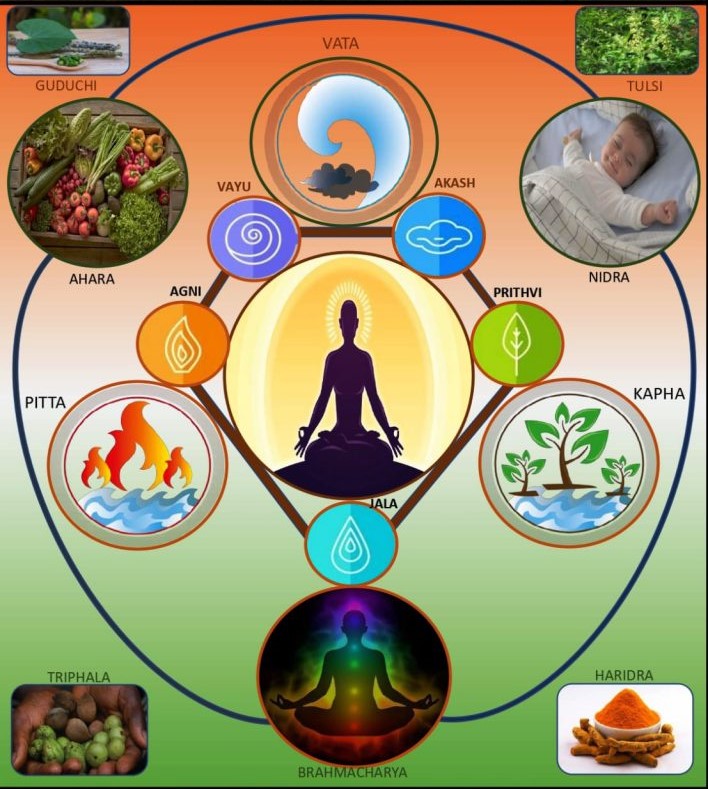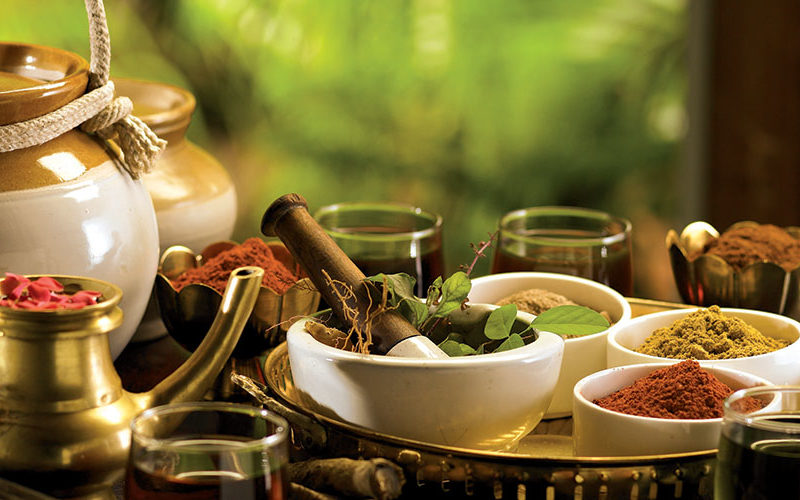Ayurveda encompasses a vast body of knowledge and practices aimed at promoting health and well-being. Among its many branches, Kaya Chikitsa stands out as a fundamental aspect of Ayurvedic medicine. Kaya Chikitsa or internal medicine, focuses on diagnosing and treating diseases that afflict the body, making it an integral part of Ayurvedic healthcare.
Ayurveda is based on the belief that the human body is composed of five fundamental elements: earth, water, fire, air, and ether (space). These elements combine to form three primary doshas, or energies, known as Vata, Pitta, and Kapha. The balance of these doshas is crucial for maintaining health, and their imbalance can lead to illness.
Kaya Chikitsa: Healing the Body
Kaya Chikitsa primarily focuses on the treatment of physical ailments and diseases that affect the body. It encompasses a wide range of therapeutic modalities, including herbal remedies, dietary recommendations, lifestyle adjustments, detoxification procedures, and more. The goal of Kaya Chikitsa is to restore harmony within the body, balance the doshas, and eliminate the root causes of disease.

Key Components of Kaya Chikitsa:
- Diagnosis: The foundation of Kaya Chikitsa lies in accurate diagnosis. Ayurvedic physicians use a combination of techniques, including pulse diagnosis (Nadi Pariksha), visual examination (Darshana), and questioning (Prashna), to understand the patient’s constitution and identify imbalances.
- Dietary Guidelines: Ayurveda places great importance on diet as a means of preventing and treating diseases. Kaya Chikitsa practitioners prescribe personalized diets based on the patient’s constitution and the nature of the ailment.
- Herbal Medicine: The use of medicinal herbs is a hallmark of Ayurvedic treatment. Herbal formulations are tailored to address specific health issues and help the body heal naturally.
- Panchakarma: This is a well-known Ayurvedic detoxification process that involves a series of therapeutic treatments, including cleansing the body through practices like Vamana (induced vomiting), Virechana (purgation), and Basti (enema). Panchakarma helps remove toxins and restore balance in the body.
- Yoga and Meditation: Physical and mental well-being are closely intertwined in Ayurveda. Yoga and meditation are often recommended to promote overall health, reduce stress, and enhance the body’s healing capabilities.
- Lifestyle Modifications: Kaya Chikitsa emphasizes the importance of a balanced daily routine (Dinacharya) and seasonal adjustments (Ritucharya) to maintain health and prevent illness.

Benefits of Kaya Chikitsa:
- Holistic Healing: Kaya Chikitsa takes a holistic approach to healthcare, addressing the root causes of illness rather than merely suppressing symptoms.
- Personalized Care: Ayurvedic physicians tailor treatment plans to the individual, recognizing that each person’s constitution and needs are unique.
- Natural Healing: Ayurvedic treatments predominantly use natural remedies, reducing the risk of adverse effects associated with synthetic drugs.
- Preventive Medicine: Kaya Chikitsa not only treats diseases but also focuses on preventing their recurrence by maintaining balance and promoting overall well-being.
Kaya Chikitsa is a time-tested and comprehensive system of medicine within Ayurveda that emphasizes the importance of healing the body to achieve optimal health. Its holistic approach, rooted in the ancient wisdom of Ayurveda, offers a natural and personalized way to treat and prevent diseases. As Ayurveda continues to gain recognition and popularity worldwide, Kaya Chikitsa remains a vital component of this holistic healthcare system, offering hope and healing to those seeking an alternative and holistic approach to wellness.


